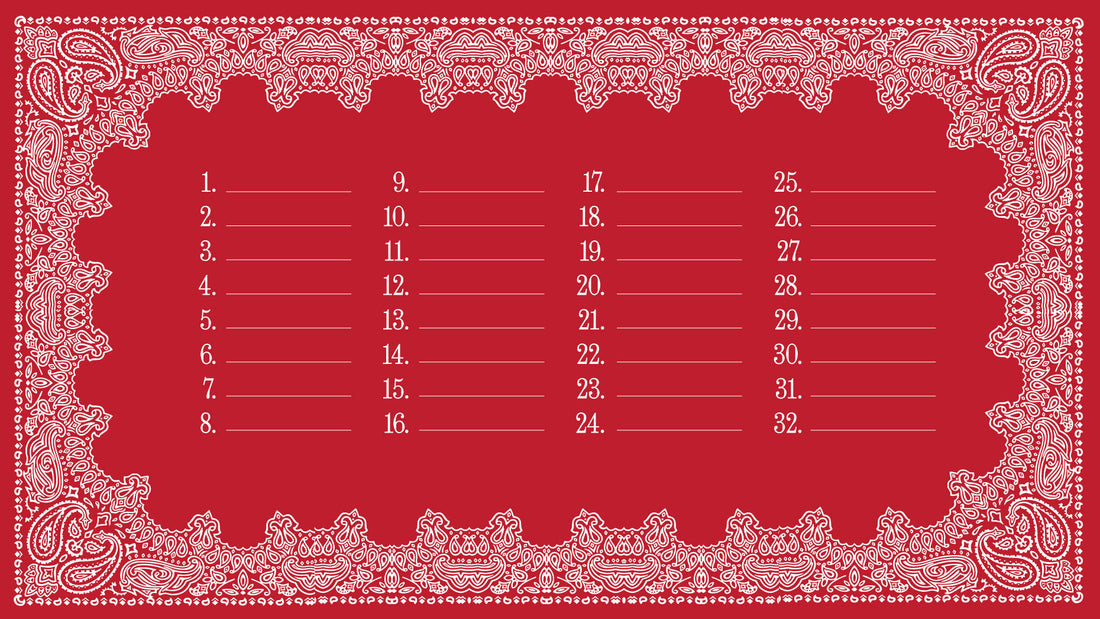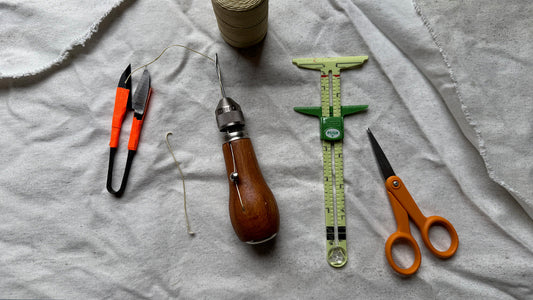
There is no mention of when the bandana was invented. Can something that simple be invented? It first surfaces in accounts of 18th century European traders: a simple cloth, derived from Hindi—"bāndhnā"—meaning "to tie." The East India Company brought it westward, and in Manchester some of the earliest industrial printers transformed them into the graphically adorned artifacts we know today. By the 19th century, bandanas had become essential to American frontier workers—cowboys, miners, and railroad laborers who valued their unparalleled adaptability.
Like a pocket knife or a pencil, the bandana is a constant companion. So how can one small square of fabric serve such purpose, and have so many damn uses? In addition to blowing our noses or wiping away the tears, here are some of our favorite applications.
- Makeshift sling
- Face mask or dust filter
- Washcloth
- Dog collar
- Improvised coffee filter
- Tourniquet
- Cooling neck wrap (when wet)
- Napkin
- Neckerchief
- Cleaning cloth
- Preliminary water filter
- Head covering
- Makeshift rope or cord
- Brow wiper
- Sun protection for head and neck
- Versatile first aid wrap
- Dish towel
- Headband
- Trail marker
- Pot holder
- Cushioned wrap for small valuables
- Blindfold
- Informal pocket square
- Improvised bag
- Signal flag
- Temporary patch
- Temporary bottle stopper
- Prop for magic tricks
- Improvised gift wrap
- Bruce Springsteen costume accessory
- Wristband
- Dramatic prop for waving goodbye

